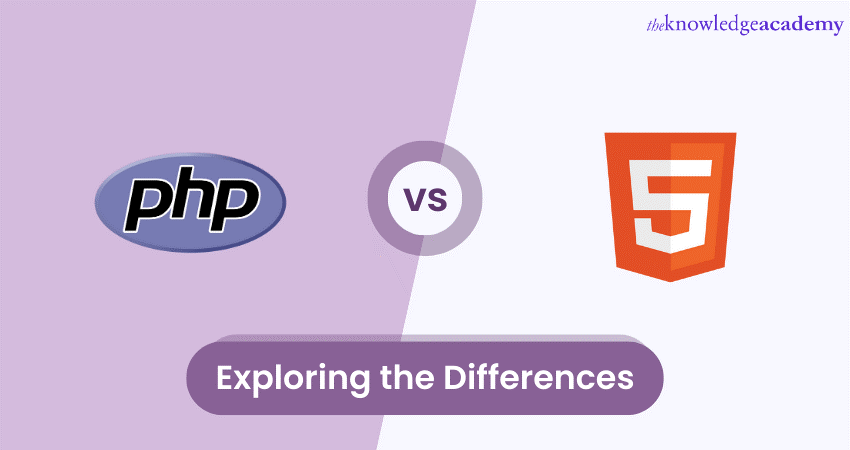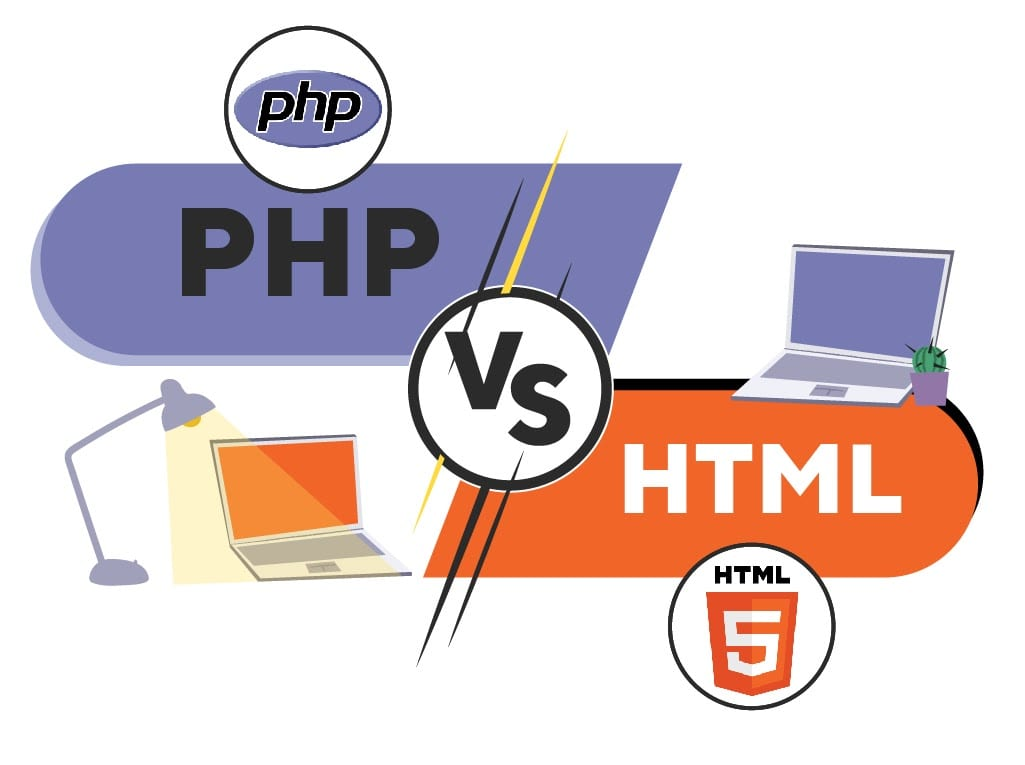PHP vs HTML: Understanding the Differences and Choosing the Right Technology for Web Development

In the world of web development, two popular technologies, PHP and HTML, play crucial roles in creating dynamic and interactive websites. While HTML serves as the standard markup language for building webpages, PHP acts as a server-side scripting language that complements HTML by adding functionality and interactivity. Understanding the differences, advantages, and use cases of PHP and HTML is essential for making informed decisions about the technology to choose for your web development projects.
PHP Basics
PHP is a versatile language widely used for developing dynamic websites and web applications. Its flexibility and extensive frameworks make it a popular choice among developers. Let’s delve into some key aspects of PHP:
Syntax
PHP syntax is similar to that of other programming languages, making it relatively easy to learn. PHP code is enclosed within tags, allowing developers to seamlessly integrate it with HTML.
Variables
PHP enables the creation and manipulation of variables to store and retrieve data dynamically. This flexibility allows developers to build complex applications that respond to user input and interact with databases.
Functions
PHP offers a wide range of built-in functions that simplify common tasks, such as manipulating strings, performing mathematical operations, and working with arrays. Additionally, developers can create custom functions to enhance code reusability and maintainability.
Control Structures
PHP supports various control structures, including if-else statements, loops, and switch cases, allowing developers to control the flow of program execution based on specific conditions. This flexibility helps create dynamic and interactive web experiences.
Here’s an example of PHP code that demonstrates the basic syntax and variable manipulation:
<?php
$name = “John”;
echo “Hello, ” . $name . “!”; // Output: Hello, John!
?>
HTML Basics

HTML forms the foundation of web development, providing the structure and content for webpages. Regardless of the programming language used, HTML plays a crucial role in creating web content. Let’s explore some essential aspects of HTML:
Tags
HTML uses tags to define elements and their characteristics. These tags are enclosed within angle brackets (< >) and provide structure to the content. Each tag serves a specific purpose, such as defining headings, paragraphs, lists, images, and links.
Attributes
HTML tags can include attributes that provide additional information or behavior to the elements. Attributes define attributes such as the source of an image, the hyperlink destination, or the style of an element.
Structure
HTML follows a hierarchical structure using elements like <head>, <body>, <header>, <footer>, <div>, and more. These elements help organize the content and provide meaning to the webpage structure.
Forms
HTML forms enable user input and interaction on webpages. Developers can create forms with various input types, including text fields, checkboxes, radio buttons, and dropdown menus. These forms facilitate data submission and interaction with backend systems.
Here’s an example of HTML code that showcases the basic structure and a simple form:
<!DOCTYPE html>
<html>
<head>
<title>My Website</title>
</head>
<body>
<h1>Welcome to My Website</h1>
<p>This is a paragraph of text.</p>
<form action=”submit.php” method=”POST”>
<input type=”text” name=”username” placeholder=”Enter your username”>
<input type=”password” name=”password” placeholder=”Enter your password”>
<input type=”submit” value=”Submit”>
</form>
</body>
</html>
Advantages of PHP

PHP offers several advantages that make it a powerful technology for web development. Let’s explore some of its key benefits:
Server-Side Processing
One of the significant advantages of PHP is that it is executed on the server-side. This feature enhances security and efficiency, as sensitive data and complex operations are handled server-side, reducing the risk of exposing critical information.
Database Integration
PHP has excellent native support for various databases, enabling seamless interaction with popular database management systems such as MySQL, PostgreSQL, and SQL Server. This integration simplifies tasks like querying, inserting, updating, and deleting data, making PHP an ideal choice for database-driven applications.
Handling Forms
PHP simplifies form handling by providing built-in functions and libraries for data validation, sanitization, and saving form inputs to a database. Developers can easily retrieve and process user-submitted data, enhancing the overall user experience.
Generating Dynamic Content
By embedding PHP code within HTML, developers can generate dynamic webpages that respond to user interactions and display personalized content. PHP’s ability to execute server-side code enables the creation of interactive user experiences and personalized web content.
Open-Source Community
PHP boasts a thriving open-source community that contributes to numerous libraries, frameworks, and continuous updates. This active ecosystem ensures that developers have access to a vast repository of resources, support, and continuous improvements, making PHP a reliable and evolving technology.
Advantages of HTML
HTML offers specific advantages that make it an essential component of web development. Let’s explore some of them:
Simplicity and Accessibility
HTML’s simplicity and ease of use make it accessible to beginners in web development. Its straightforward structure and syntax allow anyone to create and publish web content without the need for extensive programming knowledge.
Compatibility with all Browsers
HTML is compatible with all modern web browsers, ensuring that webpages created with HTML will render consistently across different platforms and devices. This compatibility enables a seamless user experience, regardless of the browser being used.
SEO-friendly Markup
HTML provides proper semantic markup, allowing search engines to understand and index website content accurately. By structuring content using HTML’s semantic elements, developers can improve search engine rankings and enhance the visibility of their websites.
Structure and Design
HTML supports the use of semantic elements like <header>, <footer>, <nav>, and <section>, providing meaning and structure to content. This organization enhances accessibility and facilitates responsive design, allowing websites to adapt to different screen sizes and devices. HTML also enables the integration of multimedia elements, such as images, videos, and audio, enhancing the overall user experience.
Use Cases for PHP

PHP finds practical applications in various web development scenarios. Let’s explore some common use cases where PHP excels:
Content Management Systems
PHP powers popular content management systems (CMS) like WordPress, Joomla, and Drupal. These CMS platforms leverage PHP’s dynamic capabilities to provide a flexible and customizable environment for website creation and management. PHP’s database integration capabilities are particularly useful for handling user-generated content, managing user accounts, and facilitating content publishing workflows.
E-commerce Solutions
PHP seamlessly integrates with e-commerce platforms, enabling the development of robust shopping carts, payment gateways, and order processing systems. PHP’s database integration capabilities allow for efficient management of customer data, inventory, and transaction processing. With PHP, developers can create secure and scalable e-commerce solutions tailored to the specific needs of businesses.
Use Cases for HTML
HTML plays a vital role in various website design scenarios. Let’s explore some common use cases where HTML shines:
Static Websites
For simple websites, such as portfolio sites, landing pages, or brochure websites that do not require dynamic content, HTML provides a straightforward solution. Developers can use HTML to create static webpages that showcase information without the need for server-side processing. Static websites are lightweight, load quickly, and are easy to host and maintain.
Email Templates
HTML is often used to design professional-looking email templates for newsletters, email campaigns, and automated responses. HTML enables the incorporation of images, links, and styled content, enhancing the appearance and functionality of emails. By leveraging HTML’s capabilities, developers can create visually appealing and engaging email communications.
Choosing the Right Technology: PHP vs HTML
Both PHP and HTML have distinct roles in web development. PHP excels at handling server-side processing, database integration, form handling, and generating dynamic content. HTML, on the other hand, provides the essential structure, semantic markup, compatibility, and design features required for building webpages.
When deciding which technology to use, consider the specific requirements of your web development projects. If your project requires advanced functionality, database integration, or dynamic content generation, PHP is the ideal choice. On the other hand, if your project focuses on simple static websites or email templates, HTML will fulfill your requirements.
By effectively utilizing the strengths of PHP and HTML, developers can create compelling and interactive web experiences that meet the unique needs of their projects. Whether you choose PHP, HTML, or a combination of both, understanding the differences and advantages of these technologies will enable you to make informed decisions and deliver successful web development projects.